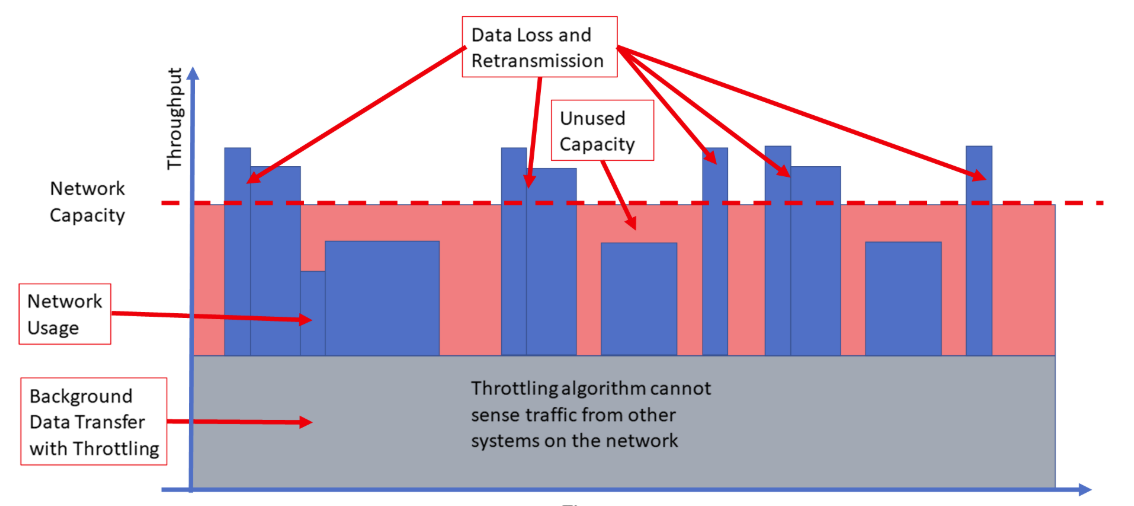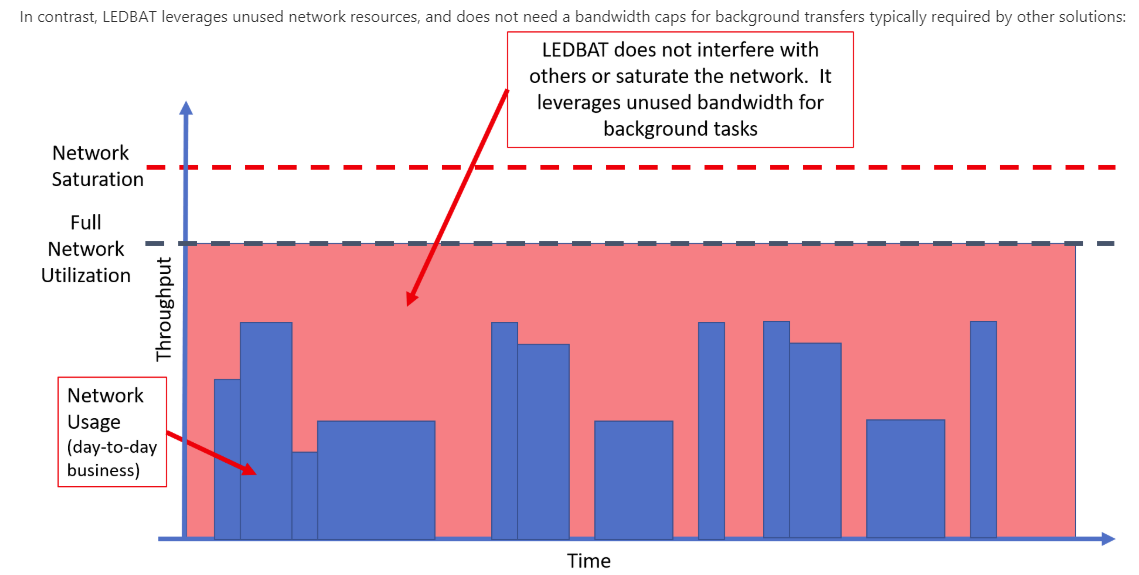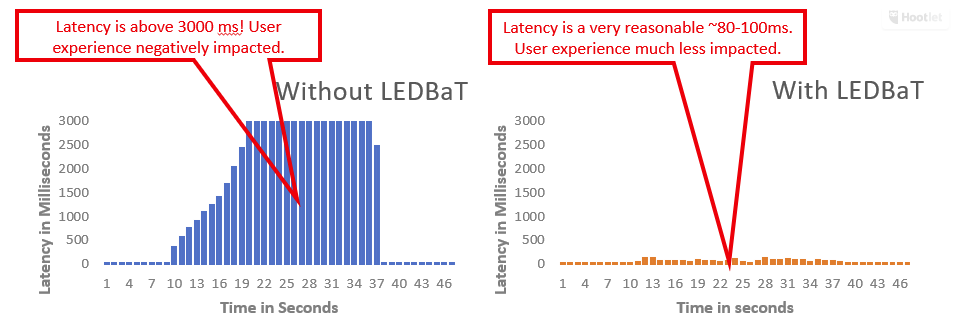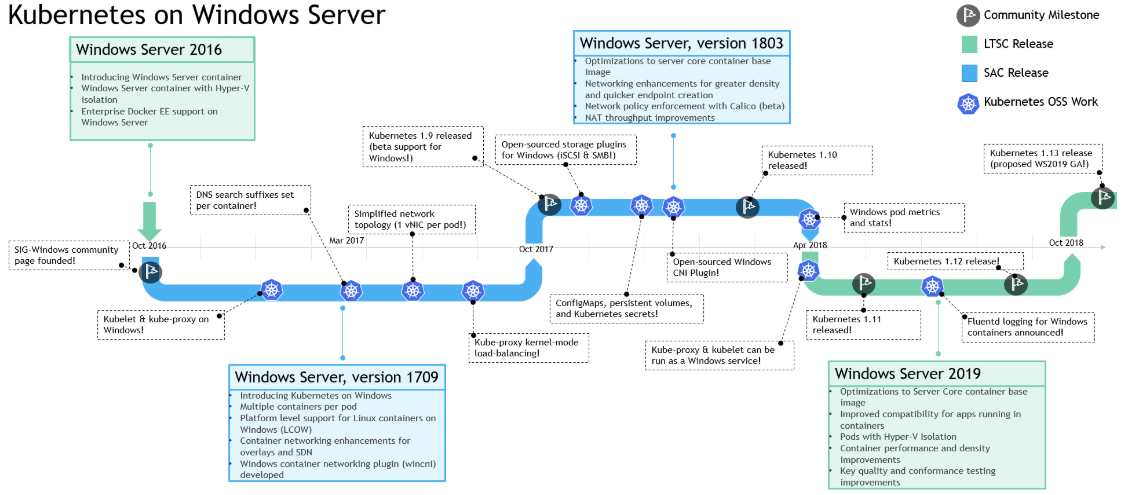Server 2016 vs 2019: What’s New, Old, Gone

Windows Server 2016 was, at the time, the fastest and most advanced server that Microsoft ever produced. However, Server 2019 has improved performance over Server 2016 in multiple areas. Quite a few features have been added, a number have been improved upon, and some aspects have been removed. As luck would have it, all the new features are covered in our Windows Server training.
Because the previous version was so solid and the newest version has quite a few improvements and new features, many administrators are asking which is better: Server 2016 or Server 2019?
Windows Server 2016 vs Server 2019: What's New?
Microsoft focused on a few critical areas in their most recent release. New features in Windows Server 2019 include improved security and better enabled hyper-convergence. Some of the major improvements Server 2019 has over 2016 are facilitating a hybrid platform that can easily work with on-prem resources and the cloud simultaneously, as well as improving the main areas comprising the application platform. These categories are some of the biggest Windows Server 2016 vs. Windows 2019 differences.
Storage Migration Service
One of the challenges Microsoft and consumers alike face is maintaining legacy systems that have far outlived their usefulness. This eats up resources while compromising overall security. However, upgrading to new systems can seem difficult and cost-prohibitive to many users.
Several years ago, administrators were really kicking the tires of Server 2019. A brief glance at IT discussion boards at that time shows the same question that's being asked today about Server 2019 — is it worth it?
This year, Microsoft introduced Storage Migration Service, a tool that facilitates migration to Server 2019 from every version of Windows Server dating back to 2003. Although mechanisms that allow file copying and transfer have existed for years, administrators have never before had access to a tool that fully automated the process of migrating files, shares, permissions, and the identity of an old server onto a new one.
This corresponds with improvements in Storage Replica, a feature that facilitates replicating a storage logical unit number (LUN) between servers. Windows Server 2019 Standard Edition doesn't require a Windows Server Datacenter license, allowing you to replicate storage volumes that contain up to 2TB of data at a time.
System Insights
Machine learning and artificial intelligence have come a long way in a short time, and Server 2019 enhances performance over Server 2016 with a System Insights module. It's easy to review a system log of past events, and administrators have been able to view live occurrences for years. With this module, however, the server also looks to the future, analyzing the platform for issues before they happen. This limits downtime, reduces crashes, and can preclude potential security issues.
Systems Insights builds on the Windows Admin Center, where Server 2019 has improved over Server 2016. With 2019, you can check the status of latency, storage, cluster CPU, and IOPS in real-time, giving unprecedented visibility into your systems' operating environment and health.
Azure Network Adapter
When the cloud was first introduced, it was met with an odd mixture of responses. Many believed that it would completely replace on-premises data centers, but server technology continued to be geared toward the latter. Over the past few years, the strengths and weaknesses of both cloud and on-prem resources have become more evident. There's a cornerstone role for both, and neither is going anywhere.
This required a server designed around facilitating the seamless integration of both technologies, and Server 2019 is able to do that much more efficiently than Server 2016. The Azure Network Adapter automates the creation of a VPN tunnel between an on-prem Windows Server 2019 and a cloud-based Azure environment. Although administrators could do this manually before, it wasn't the most natural process. Performance and security in Server 2016 were less optimal than what Server 2019 offers. This automated network adapter takes the hassle out of the entire situation, effortlessly incorporating the two for the highest security and performance levels.
Cluster Sets
With the combination of cloud and on-prem technology, drastically increased deployment of virtual machines, and the need to access massive data sets stored across numerous drives, clusters have become more and more critical. While Server 2016 heavily emphasized clusters, Server 2019 introduces the concept of Cluster Sets, which are essentially clusters of clusters.
This large-scale application of the cluster concept improves the availability of applications and data while emphasizing resiliency across the entire system, making Windows Server 2019 a much better choice than 2016. Cluster Sets are geared for high growth, providing an extremely efficient way to scale without compromising performance.
Persistent Memory
Drastically increased data storage is one thing, but the ability to rapidly access that data is another. Persistent Memory, or PMem, is Microsoft's solution — and it's impressive. At Microsoft Ignite 2018, the latest version of Windows Server demonstrated an astounding latency of fewer than 40 microseconds, even when performing as many as 13.8 million input/output operations per second (IOPS). Windows Server 2019 vs. 2016 performance is more than double the prior industry benchmark of 6.7 million IOPS, and it required a mere 12 server nodes.
In addition to its speed, one of PMem's most notable features is its resiliency. This non-volatile RAM maintains its contents through both scheduled and unexpected power cycles, which is why it's often referenced as "storage-class memory."
Virtual Network Peering
While the cloud has drastically improved network flexibility and functionality, it has come at a cost. When dealing with a public cloud and multi-cloud world, the devices you're using can continually shift between any number of racks, cages, or datacenters. You might even have reoccurring migrations between regions and hosting providers, which triggers a tremendous amount of effort by network administrators to address, readdress, and update device tables just to maintain a functioning network.
Depending on your setup, Vnet Peering functionality is somewhat limited to resources in the same cloud region or even datacenter. Even with these constraints, however, the consistency in virtual networks with Server 2019 represents a substantial improvement over Windows Server 2016.
Precision Time Protocol (PTP) with Leap Second
This is a specialized feature that isn't necessary for the majority of users, but it's a game changer for those who need it. Some industries and applications require absolute precision timekeeping, down to the microsecond. While Server 2016 was accurate, 2019 is much better. PTP is a protocol that permits network devices to compile the latency added by each network device into timing measurements, resulting in the most accurate time tracking possible.
Another new feature, Leap Second, tracks the rotation of the earth and adds leap seconds to compensate for any resulting changes.
Low Extra Delay Background Transfer (LEDBAT)
Managing bandwidth and minimizing network congestion isn't a new battle for network administrators, but current tools have substantial limitations. For example, throttling outlines the maximum bandwidth permitted for a specific purpose, and those limits can't be exceeded even when the entire bandwidth is unused and available. Background Intelligent Transfer Service (BITS) employs Adaptive Bit Rates (ABRs) to decide what level of bandwidth is available to lower priority traffic. Although useful, it can take quite a few adjustments to dial in the settings correctly, and each change introduces a delay.
LEDBAT is a network congestion controller that manages available bandwidth for users and applications in real-time, then consumes the entire bandwidth when a network isn't in use. It's referred to as a scavenger protocol because it actively searches for any available bandwidth on the network and puts it to use.


Latency is a critical concept in user satisfaction, and LEDBAT makes a remarkable difference. In the tables below, the same network traffic is shown with and without LEDBAT optimization in place. As you can see, the user experience is night and day.

Shielded Virtual Machines: Linux Expansion and HGS Offline Mode
Until now, shielded VMs were only available for Windows. With Windows Server 2019 Hyper-V technology, expanded support is now available for shielded VMs to Linux. This drastically expands network flexibility if you have Linux VMs, permitting secure data without loss of performance for both operating systems on the same network.
One of the most noticeable Server 2016 vs. 2019 differences is that Server 2019 introduces the capability to host virtual machines offline, allowing you to shield them as long as the Hyper-V host's security hasn't changed.
Enhanced Windows Defender Advanced Threat Protection
When it comes to security, Server 2019 vs. 2016 isn't even a contest. The newest security set included with Windows Server 2019 provides an array of intrusion prevention capabilities, such as attack detection, zero-day exploits, and preventative protection. Expect Breach is one feature that constantly monitors areas that have been identified as vulnerable to detect a breach instantly if one occurs.
Data Plane Development Kit (DPDK)
The demand for increased media resolution has driven the evolution from high-definition to 4K, and the industry is already preparing for the next leap into 8K resolution. Real-time multiplayer gaming and augmented reality/virtual reality (AR/VR) will only drive the demand for resolution higher. Cisco estimates that IP video traffic will comprise an astounding 82 percent of all consumer internet traffic by 2021.
Facilitating this while maintaining an operational network requires high bandwidth and low latency, necessitating a modified approach to network architecture. This need is met by mating DPDK libraries with Windows Server, which bypasses the host networking stack and emphasizes fast packet processing capabilities by user-mode applications. Until now, DPDK was exclusively available on Linux, but Windows 2019 vs. 2016 Server provides a tremendous boost in flexibility.
Server 2019 Improvements Over Server 2016
When you're looking at Windows Server 2016 vs. 2019 differences, the benefits aren't limited to new features. Although Server 2019 introduces an impressive array of new capabilities, the improvements on existing functionalities is equally remarkable.
Container Networking with Kubernetes
In recent years, application modernization using containers has become increasingly popular. As applications are moved from virtual machines to containers, being able to exercise network management agility takes on critical importance. Windows Server utilizes Kubernetes to orchestrate this via an open-source, standardized framework, and Server 2019 noticeably increases usability over Server 2016 in two ways.
First, enhanced platform network resiliency is a cornerstone concept in 2019 and positively impacts container employment. Second, the support of container networking plugins has been increased, providing greater flexibility than 2016 had across a variety of user requirements.

Improved Storage Spaces Direct (S2D)
Virtual machines have continued to grow in popularity and utility, requiring servers to evolve in ways that continue to support this technology. S2D is the primary software-defined solution Microsoft uses for hyper-converged infrastructure (HCI) deployments. It sets aside local storage space in each individual server, then aggregates that space in a distributed storage system to facilitate the employment of virtual machines.
Critical upgrades for Server 2019 include 64TB of space per volume and an astounding 4PB of space per storage pool. Microsoft has also streamlined the ability to monitor and manage S2D through the Windows Admin Center, enabling the functionality to increase simultaneously with storage upgrades.
Resilient File System (ReFS)
The amount of data we digitize and constantly reference has increased exponentially, and so has the way we handle it. Limited storage space on single drives has evolved into massive storage distributed among sizeable arrays of disks. Microsoft previously utilized NTFS to manage files, but by Server 2012, this system had become outdated, leading to the inaugural version of the Resilient File System.
ReFS was designed to be self-repairing and facilitate virtualization between physical disks and logical volumes. The earliest versions offered some improvement over NTFS but were slower in many respects. Server 2016 addressed these issues, implementing ReFS in a highly improved and fully functional approach to file storage. Server 2019 built on that foundation to emphasize two crucial improvements: deduplication and compression. Although Server 2016 was functional, Server 2019 fully supports both processes and eliminates a few persistent bugs 2016 had.
Cloud Witness
This high availability feature employs failover clusters stored in the Azure cloud platform to ensure continued operation if a site outage occurs. In Server 2016, Cloud Witness required a cluster name object (CNO) with an Active Directory account to access this feature. Server 2019 is an improvement over 2016 Cloud Witness functionality, eliminating this requirement and permitting a local user account on the Windows Server to employ failover clusters.
Software-Defined Networking (SDN) Gateways
Although SDN has been around for a while, its importance is only increasing. Software-defined networking frees a network from its physical constraints by abstracting it, overlaying an SDN on top of the underlying physical cable, VLANs, and gateway addresses. This allows for rapid design, deployment, and adjustment of the network without requiring any material change, drastically improving network deployment speed, security features, and various automation capabilities.
Server 2019's gateways boast substantial speed improvements over Windows Server 2016 that can be as much as three times faster, depending on your application. Microsoft's most recent release also supports IPv6 and dual-stack IPv4/IPv6 addressing, permitting encryption for all traffic on your virtual network.
Virtual Network (Vnet) Encryption
Traffic encryption has typically been done at the application layer, but Server 2019 expands 2016's ability to encrypt traffic between virtual machines. It's now built into the operating system as a foundation of server, application, and hypervisor communications. Network administrators can protect all subnet communications between host servers, automatically encrypting all network traffic that occurs under that umbrella.
This provides increased efficiency and performance when more web frontend and backend databases need to be added because they join the same encrypted communication stream that's already been established. Securing comms at the network level rather than the application level is a substantial improvement in encrypted network performance.
Dynamic Virtual Machine Multi-Queue (d.VMMQ)
VMs need the highest level of throughput possible. As network interface cards have gotten faster, the level of processing required to facilitate low-latency network traffic began to exceed what a single CPU could facilitate. Server 2019 introduces Virtual Machine Multi-Queue, which is an improvement over Server 2016's Virtual Machine Queue, so traffic can be processed by multiple processors.
Although the capability for this technically existed previously, it was a labor-intensive manual effort that required quite a bit of planning, monitoring, establishing baselines, and constant tuning to achieve the optimal effect. With d.VMMQ, that entire process is automated and is designed to autotune to the existing workload. After a supporting driver has been installed, no further setup is required.
What's Gone with Windows Server 2019?
Along with the tremendous number of new and improved features, Server 2019 has removed several aspects of Server 2016. Although these are reasonable adjustments, if you're migrating from Server 2016 and your infrastructure employs any of the below features, it's good to know they won't be available before you begin updating your server.
Internet Storage Name Service (iSNS)
Interaction between iSNS servers and clients has traditionally used this feature, but Server Message Block has replaced it. SMB was initially introduced in Server 2012, and its functionality has increased to the point where it can do everything iSNS could and more.
Print Components for Server Core
In nearly all previous versions of Windows Server, these print components were disabled by default. In Server 2016, Microsoft changed the default settings to enabled. This didn't prove to be useful, so one of Server 2019's differences over 2016 was reverting to a default disablement. If you need these components, however, you can run a commandlet to enable them.
Business Scanning/Distributed Scan Management
This feature was introduced in Server 2012 and required that scanners support it. The tech is now outdated, and no scanners currently support it, so it has been removed.
Remote Desktop Connection Broker and Virtualization Host in Server Core Installation
Microsoft found that these features weren't useful in most server configurations. As a result, they're not included by default in any version except Windows Server with Desktop Experience, but can be installed if you need them for your Remote Desktop infrastructure.
Which is Better: Server 2016 or Server 2019?
Windows Server 2019 has been widely praised within the IT community as a substantial improvement over Server 2016. Increased security, decreased latency, and a vastly improved suite of tools to facilitate hybrid platforms are phenomenally useful assets. All in all, this is definitely a win for information technology.
delivered to your inbox.
By submitting this form you agree to receive marketing emails from CBT Nuggets and that you have read, understood and are able to consent to our privacy policy.